phillips ew powercore ucl - diy
My Wife and I recently completed our kitchen reno. And after much research on GW and informative posts by David Tay, we decided to go with Phillips eW Powercore UCL in varying lengths. We couldn't be happier! Love the plug & play functionality via jumper cables.
In our opinion, end-to-end connectivity is unnecessary since the eW Powercore puts out so much light. End-to-connectivity means buying more lights in order to complete a run and these lights are not cheap by any means.
3000 K was a perfect temperature for us. My only complaint is they are not dimable to the same 5% output of our Cree CR4-575L recessed kt lights. I would say the eW Powercore only dim to about 10-15%. At night, after the dishes and counter tops are all cleaned up, they're brighter than I would prefer. It would be nice if they provided more ambient mood lighting at the lowest setting.
As for install, I made sure the electrician finished the connection coming out the the wall (Romex into the permanent wiring compartment). No offense to the electrician, but install requires more finesse than most contractors are willing to give. The UCL lens is very sensitive and although protected by a thin film, I didn't want the electrician slapping these expensive lights hastily.
As you can see from the pictures, our cabinets have fencing and I did not want to change the integrity / support of the cabinets by cutting out the fencing. Nor did I want the fencing to dictate where our UCL's were placed. I cut varying lengths of wood blocks to use as a bridge for two reasons: 1) support underneath the UCL to act as a buffer between the bottom of the cabinet; and 2) support in either side of the fencing for the mounting clips to attached.
The overall thickness and width of the wood blocking was approx 1" thick x 1.5" wide x whatever length, i.e. approx. 8" length for a 9.25" UCL. 18" length for a 19.25" UCL, and 38" length for a 39.25" UCL. Smaller lengths were cut where I wanted to place an UCL under the fencing (maybe two, 9" lengths of wood for a 19.25" UCL).
The profile of the UCL is so slim that the UCL's do not protrude below the cove edge (trim piece) attached to the bottom of the cabinets.
I drilled pilot holes into the varying lengths of wood blocking to prevent splitting (the particular wood I used was soft.. I'm sure harder pieces of wood would not need to be pre-drilled). I used the provided mounting clips and screwed one clip on each side of the wood blocking. This is not an exact science as the clips only need to be placed 1/3 of the length inside the outer edge of each block of wood.
I secured the wood blocking with liquid nails and clamps. I was very careful not to use too much liquid nails as the clamps displace any excess liquid nails... a little goes a long way! Let stand for a few hours and the eW Powercore UCL can now be clipped directly onto the mounting clips.
Going forward, the jumper cables are secured (also varying lengths). DW bought low voltage staples and they worked great. I hope this post was helpful.
The last picture is a sketch my wife made for the electrician illustrating the connectivity and where we exactly needed the romex pulled in from behind the wall.
Side note: most electricians you find/interview would rather pull individual Romex wires to feed each UCL. They can't wrap their brain around the beauty of low voltage lights and using jumper cables to connect to each light. After all, the end-to-end connectivity (or jumper cablecable connectivity) is a large part of the price of the product. Why not bring the romex through the wall in as few places as possible into as few permanent wiring compartments as possible??
Thanks to David Tay and the rest of the GW community for the UCL topic discussions!
If I left anything out, feel free to ask questions
This post was edited by BrianKing on Sat, May 24, 14 at 10:11






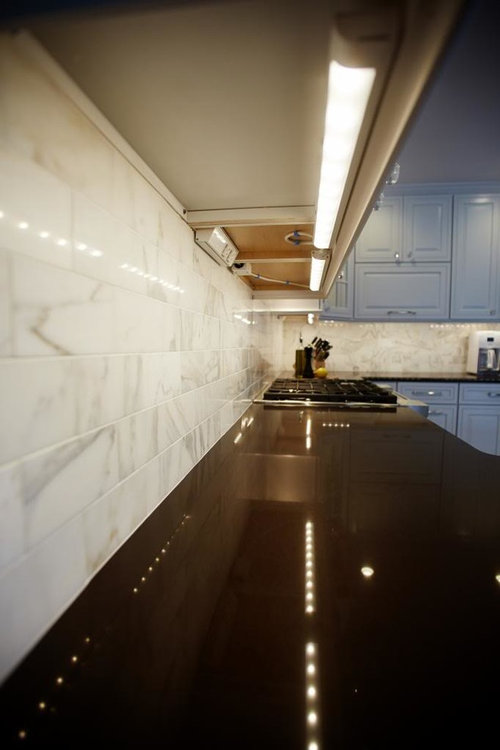


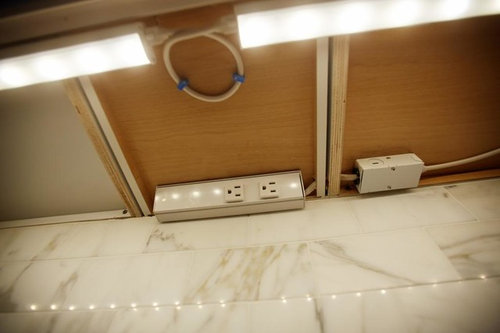
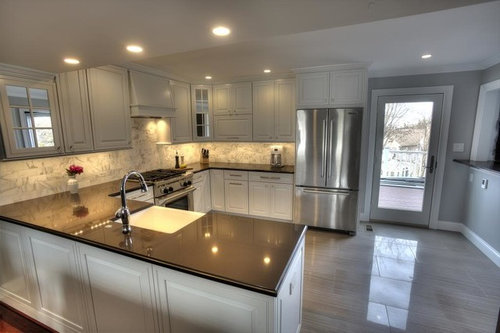

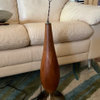

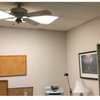
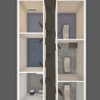

David
Related Professionals
Green Bay Lighting · Oak Lawn Lighting · Scottdale Lighting · Peachtree City Furniture & Accessories · Shakopee Furniture & Accessories · Portage Furniture & Accessories · Sugar Hill Furniture & Accessories · Indian Creek Furniture & Accessories · Mount Sinai Interior Designers & Decorators · Lake Nona Electricians · Boise Decks, Patios & Outdoor Enclosures · Frederick Decks, Patios & Outdoor Enclosures · New Albany Decks, Patios & Outdoor Enclosures · Salt Lake City Decks, Patios & Outdoor Enclosures · San Antonio Decks, Patios & Outdoor Enclosures